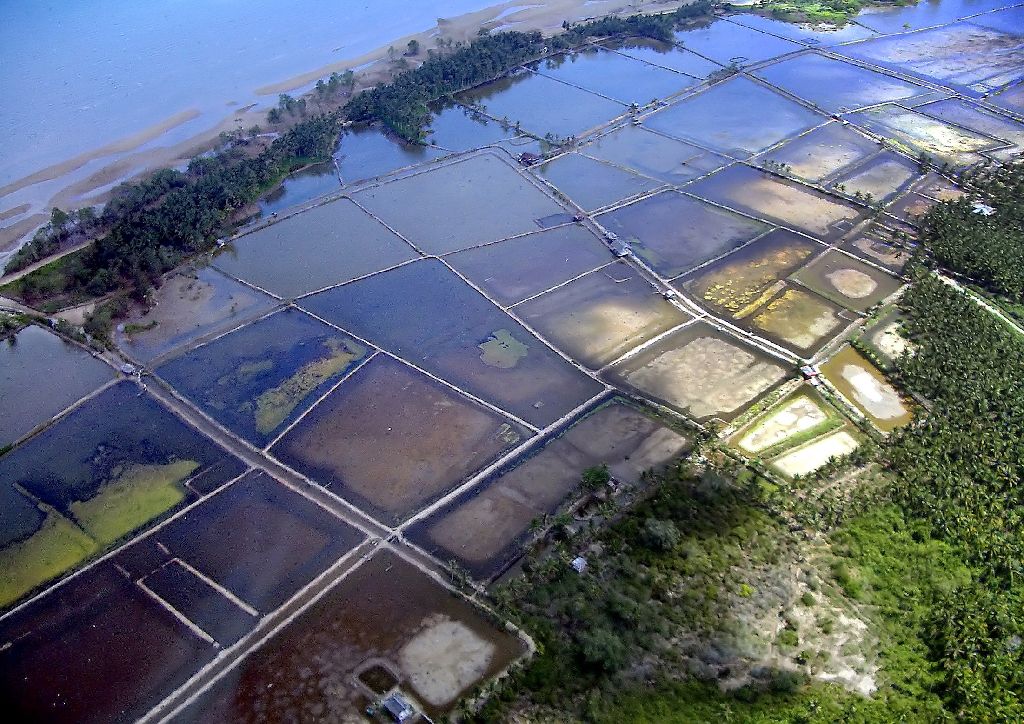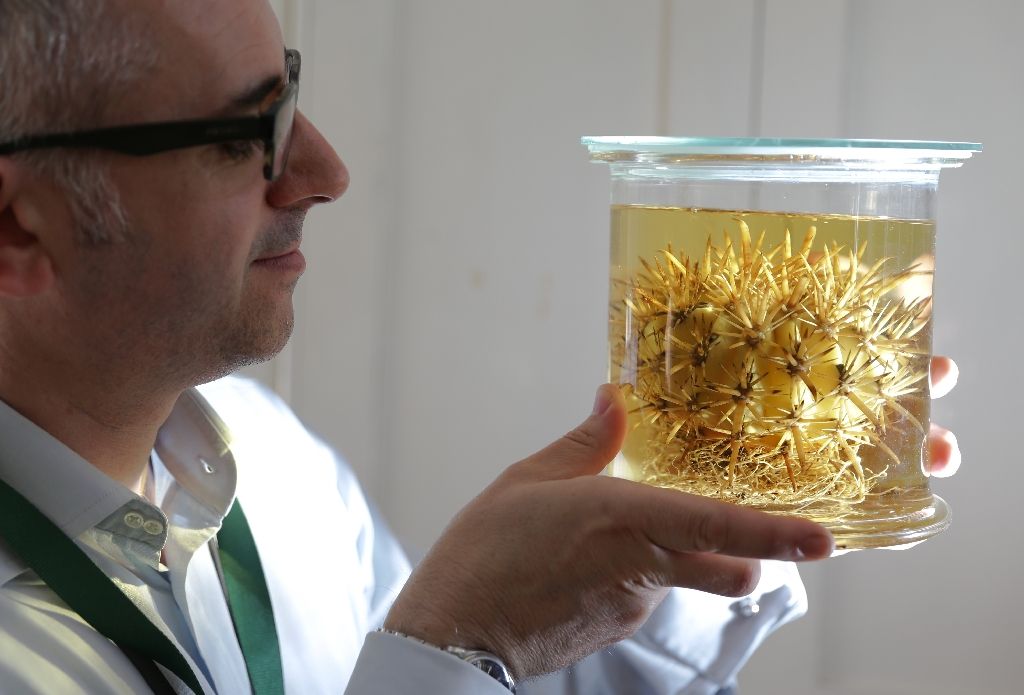The first annual State of the World's Plants report, which involved more than 80 scientists and took a year to produce, is a baseline assessment of current knowledge on the diversity of plants on earth, the global threats these plants currently face, as well as the policies in place and their effectiveness in dealing with threats.

Britain's Royal Botanic Gardens at Kew [Credit: AFP/Daniel Leal-Olivas]
"This is the first ever global assessment on the state of the world's plants. We already have a 'State of the World's ...birds, sea-turtles, forests, cities, mothers, fathers, children even antibiotics' but not plants. I find this remarkable given the importance of plants to all of our lives- from food, medicines, clothing, building materials and biofuels, to climate regulation. This report therefore provides the first step in filling this critical knowledge gap." said Professor Kathy Willis, Director of Science at the Royal Botanic Gardens, Kew at the report launch on Monday.
"But to have effect, the findings must serve to galvanise the international scientific, conservation, business and governmental communities to work together to fill the knowledge gaps we've highlighted and expand international collaboration, partnerships and frameworks for plant conservation and use," she added.
The status of plants outlined in the report is based on the most up to date knowledge from around the world as of 2016 and is divided into three sections; describing the world's plants, global threats to plants and policies and international trade.
Naming and Counting
The first section focuses on the diversity of plants on earth, noting that there are now an estimated 391,000 vascular plants known to science of which 369,000 are flowering plants -- with around 2,000 new vascular plant species described annually. Some of the most exciting were found during fieldwork while many others were detected only after they have already been preserved and filed as herbarium specimens and a few have been discovered in the glasshouses at Kew.

according to a study by Britain's Royal Botanic Gardens [Credit: AFP/Raphael Alves]
One of the largest carnivorous plants known (1.5m in height), a new insect-eating plant of the sundew genus called Drosera magnifica was even first discovered on Facebook. Eighteen new species of the genus Ipomoea in the morning glory family, were described from Bolivia last year, among them a close relative of the sweet potato, Ipomoea batatas, offering exciting options for the future of this crop.
"But there are still large parts of the world where very little is known about plants. Identification of these important plant areas is now critical." said Steve Bachman, strategic output leader for the State of the World´s Plants report, RBG Kew. "Similarly, we still only know a fraction of the genetic diversity of plants and whole-genome sequences are currently available for just 139 species of vascular plants. Activity in this area needs to speed up," he added.
Useful plants
In terms of the uses of plants, the report collates data from multiple data sources to reveal that at least 31,000 plant species have a documented use for medicines, food, materials and so on. The majority (17,810 plants) of those now documented have a medicinal use.

poses the biggest extinction threat to plant species [Credit: AFP/Sebastien Blanc]
Aside from the plants that are currently in use, the report looks at where collection efforts should focus to include plants that will be useful in the future. One set of plant species of critical importance to global food security are the wild relatives of crops, a pool of genetic variation that can help to drive the improvement of our crops into the future. A recent inventory has revealed that there are currently 3,546 prioritised global plant taxa identified as 'crop wild relatives' and Kew's Millennium Seed Bank (MSB) includes 688 crop wild relatives among its over 78,000 accessions, but there are still substantial gaps.
Research in this sector has found that the traits that have been bred into crops over years of domestication are not necessarily the same ones that will provide the greatest climate resilience. Given that many of the wild populations of these species are under considerable threat due to land-use and climate change there is an urgent need to conserve those species not adequately represented in current collections. More seed banking will help preserve a wider range of alternatives to the crops on which the world over relies today (report pages 20-23).
Climate change
The report also explores current knowledge around the impact of climate change on plants and finds that while there is a good understanding for some regions of the world, there are still large areas for which little or no research exists. In those areas where good data is available, clear impacts are visible, including changes in flowering times, turnover in plant communities and movement of species with changing climates.

[Credit: AFP/Daniel Leal-Olivas]
Research referenced in the report shows that all but one of the world's biomes have experienced more than 10% change in land-cover type in the past decade due to the combined impacts of land-use and climate change.
This research, led by teams at the International Center for Tropical Agriculture in Colombia is also the first of its kind to allocate timeframes for the changes in policy and practice needed to maintain food production and security in Africa. It identifies that up to 30% of areas growing maize and bananas, and up to 60% of those growing beans, are likely to become unviable by the end of the century. But it also highlights some crops like cassava and yams that are showing much greater resilience and could worth focusing on in years to come (report pages 36-39).
"Having proof that root crops like cassava and yams are among the climate-smart crops of the future for sub Saharan Africa is vital for informing policy and planning today," added Professor Willis.
Further research into building a climate resilient coffee economy in Ethiopia published in this report highlights how coffee production is likely to be drastically affected by climate change, but claims that this could be offset if there were interventions now to develop new areas for coffee plantations, which may even lead to gains in coffee production.

[Credit: AFP/Daniel Leal-Olivas]
Important plant areas
1,771 important plant areas have been identified globally but very few currently have conservation protection. In the UK alone, 165 such sites have been recognised, including parts of the Atlantic woodlands and the Celtic rainforests which are considered to be globally important. These sites include the Lizard in Cornwall, the Brecklands in East Anglia and parts of the west coast of Scotland. Important plant areas have also been identified in several of the UK Overseas Territories including the Falkland Islands and plans are underway to extend this programme to the Caribbean UK Overseas Territories.
Invasive species
A large movement of invasive alien plant species is also occurring. Nearly 5000 plant species are now documented as invasive in global surveys. These plants are causing large declines in native plants, damaging natural ecosystems, transforming land-cover and often causing huge economic losses. In the UK, this includes the highly invasive Japanese knotweed (Reynoutria japonica), introduced as an ornamental plant to Britain in the mid-19th century and costing Great Britain more than £165 million annually to control (report pages 48-51).
The report calls for closer collaboration between institutions and organisations working with invasive species to enable the establishment of a single global list that documents taxonomy, threat, distribution, control and other relevant information. Stricter enforcement of legislation and increased implementation of quarantine procedures would minimise the risk of further.

[Credit: AFP/Daniel Leal-Olivas]
Plant diseases
There are many emerging threats also occurring with plant diseases, and research effort into these diseases is skewed towards countries with a wealthier research infrastructure.
Threats and extinction
Best estimates lead us to believe that 21% of the world's plants are currently threatened with extinction and ongoing monitoring will allow us to determine whether the trend is of plants slipping closer towards extinction or becoming less threatened.
Plants and policies
Although trade in plants supports livelihoods worldwide, illegal or unsustainable trade is causing additional pressure on wild biodiversity and strict enforcement of international legislation is crucial. Adoption and implementation of policies such as CITES (Convention on International Trade in Endangered Species) have had demonstrable benefits and there is cause for optimism that the Nagoya Protocol will enhance the effectiveness with which countries conserve and utilise their biodiversity.
One of the main plant groups that are still widely traded are orchids, a fact confirmed by data from the UK borderforce. Of all plants plants seized at Heathrow airport in 2015 over 42% were wild orchids.
"This is the most significant horizon-scanning document to be released by Kew in recent decades and I hope as many people as possible will access the findings," said Richard Deverell, Director of the Royal Botanic Gardens, Kew.
"Plants represent one of the most important constituents of biodiversity, the foundation of most of the world's ecosystems and hold the potential to tackle many of the world's present and future challenges. We are uniquely placed to unlock their importance and are proud to have both the catalogue of over 250 years of collections and active scientific field work globally that allows us to interpret the data so it will have multiple uses for generations to come," he added.
Read the report >here.
Source: Royal Botanic Gardens Kew [May 11, 2016]